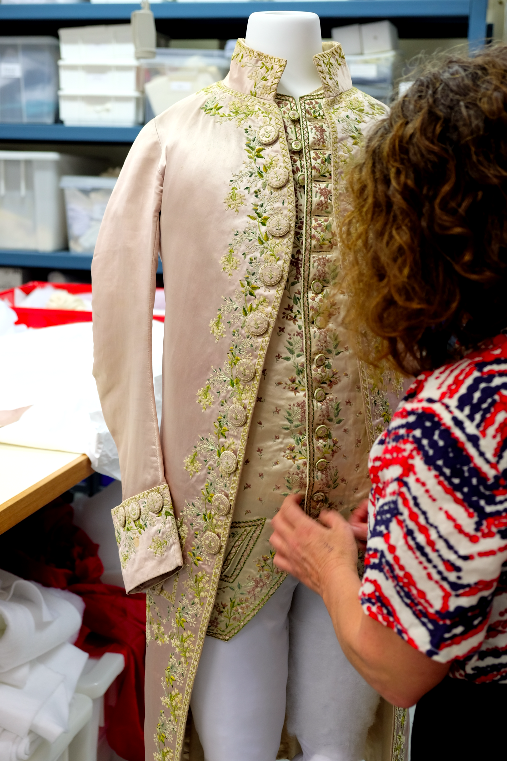Welcome to our Textiles Special Interest Group (SIG). We work with fabric and related collection material. We conserve costumes, tapestries, boots, fans, hats and other accessories, as well as carpets, curtains and upholstered furniture.
Symposium
We hold a symposium every two years. The last Textiles SIG Symposium, titled Fibre to Fabric, Fur, Feather and Finishes was held in Sydney in February 2019.

Causes of degradation
Most textiles are designed and manufactured for a specific function. Textiles progressively deteriorate after long periods of use and storage. Being worn, hung, sat on, laundered and folded can cause fibres, folds and seams to tear and dyes to fade, while dust and processes of manufacture and finishing can accelerate the physical deterioration of textiles.
During storage, fluctuations in temperature and relative humidity can also accelerate the deterioration by encouraging biological activity including insect infestation and the growth of mould and mildew. Natural fibres are especially susceptible to insect damage, with moths favouring wool and silk, while silverfish and rodents prefer cotton and flax.
Dyed textiles are particularly sensitive to moisture and exposure to light. Natural and synthetic dyes are often fugitive, so care should be taken when laundering dyed fabric. Continuous exposure to ultraviolet radiation will also increase fading and accelerate degradation as the fibres become more brittle and fragile.

Treatments
Appropriate textile handling and storage can minimise physical and chemical deterioration. Large flat textiles can be interleaved with acid free tissue, then roll-stored while smaller flat textiles can be stored flat in acid free boxes. Clothing can be hung on padded coat hangers while larger or bulkier 3D sculptural textiles may be stored on specially constructed mannequins or supports to minimise damage during storage or transit. Where practical, handle textiles using gloves to minimise the transfer of acid from your hands to the textiles.
If damage does occur, loose threads are secured, tears and seams are repaired or textiles are lined to stabilise the textile prior to cleaning or storage.
Textile cleaning treatments include brush vacuuming, dry and wet cleaning. Vacuuming using soft brushes and a HEPA filtration system removes the dust that can damage textile fibres, harbour moisture and attract pests. Dry cleaning usually precedes wet cleaning to remove stains and reduce the acidity of textiles as they age. Textiles are best stored within recommended light (~50 lux) and humidity levels (50+5%) and temperature (25+50C) to preserve their original condition and function.